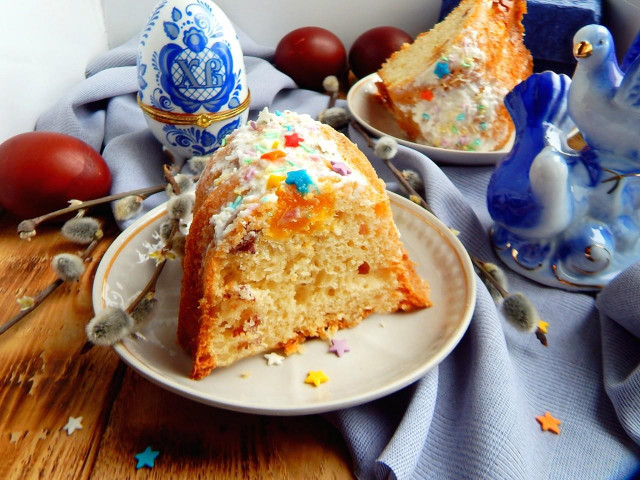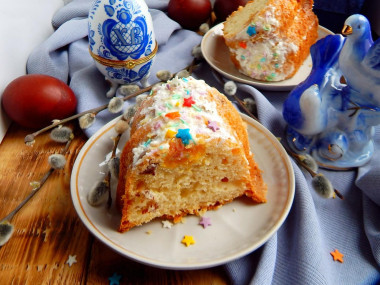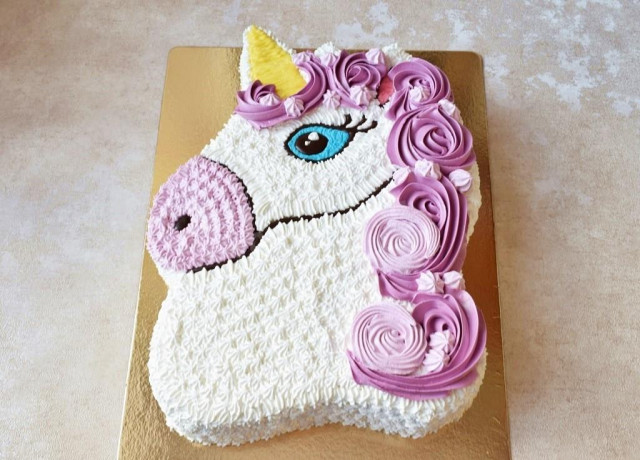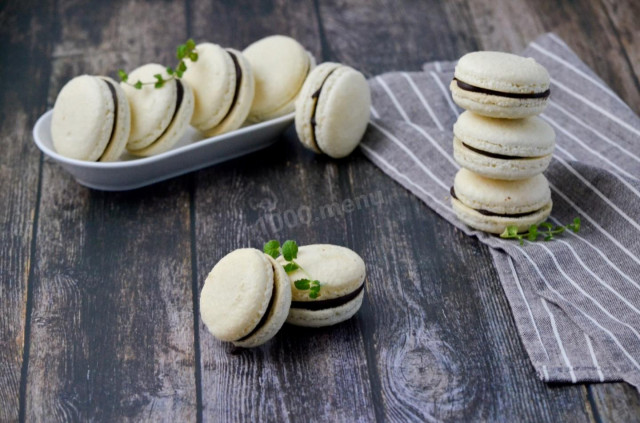Composition / ingredients
Step-by-step cooking
Step 1:
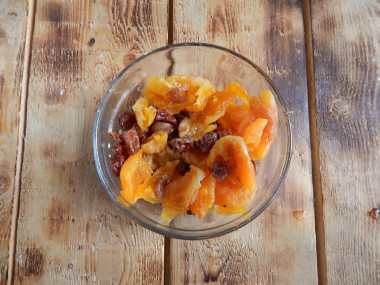
Prepare the ingredients for the cake. Raisins, dried apricots (you can use other dried fruits if desired) are thoroughly washed, poured with boiling water and left for 15 minutes to swell. After the specified time, we drain the water, dry the dried fruits. Cut dried apricots into small cubes.
Step 2:

Put the pressed yeast in a bowl, they should be at room temperature. Therefore, if they were stored in the refrigerator or freezer, they need to be taken out in advance and allowed to warm up. A piece of yeast is rubbed with a fork or spoon to a mushy mass. Warm up the milk to 36 degrees and pour it into a bowl with yeast, add a tablespoon of sugar and stir the mixture. We put a bowl with this mixture in a warm place for 15 minutes.
Step 3:
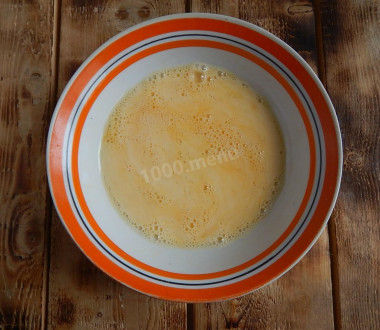
Beat the chicken eggs with a fork in a separate bowl with the remaining sugar, salt and vanilla. Pour melted and cooled to room temperature butter. Mix it up.
Step 4:
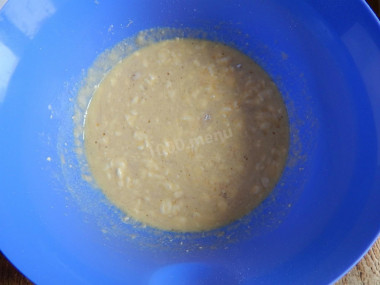
After the specified time, foam should appear on the surface of the yeast mixture, which means that the yeast has been activated, everything is done correctly. Pour the resulting egg-cream mixture into a bowl with yeast mixture. Mix again so that the mixture becomes homogeneous in consistency.
Step 5:
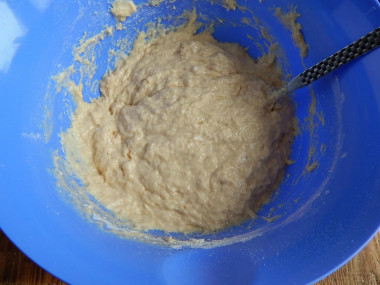
Now pour the sifted wheat flour in parts. Stirring the mixture with a spoon each time.
Step 6:

At the same stage, add raisins and pieces of dried apricots, rolled in flour.
Step 7:
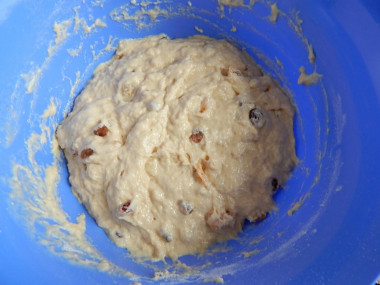
When the dough becomes difficult to mix with a spoon, spread it on the work surface covered with flour and continue kneading it with your hands until it becomes smooth and elastic. Put the dough in a bowl, cover it with a towel and put it in a warm place for 1.5 hours. After the specified time, we knead the dough, leave it for another 1 hour.
Step 8:
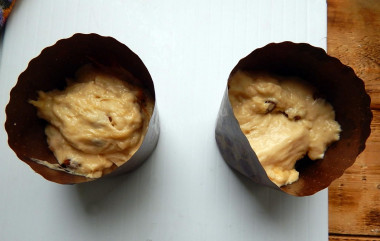
We proceed to the preparation of cakes. You can use any form for baking cakes: paper, silicone or metal. Lubricate the walls and bottom of the mold with butter and fill the dough with no more than half. We put the blanks of the cakes in a warm place for 15 minutes for proofing.
Step 9:
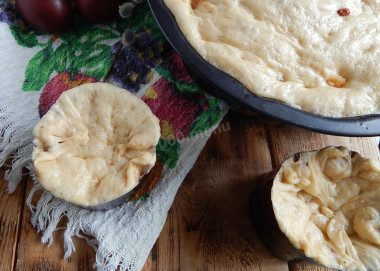
Preheat the oven to 180 degrees and bake the cakes for about 40 minutes. But the baking time depends on the operation of the oven, the size of the shape of the cakes. You can check the readiness of the cakes with a wooden stick. In the meantime, you can prepare the glaze for the cakes. You can cover the cakes with any cream or fudge to taste. For example, a gelatin-based cream is simple and interesting.
Step 10:

Gelatin is dissolved in water according to the instructions indicated on the package. Pour thick cream into the jelly mixture, add sugar and vanilla to taste. Mix until a homogeneous mixture is obtained, let it cool down a little and apply it to the cap of the cooled cakes.
Step 11:

Decorate the cakes with pastry sprinkles on top.
Step 12:

The cakes are ready. Let the icing on the cakes freeze in the refrigerator. We serve them to the table. Bon appetit!
Caloric content of the products possible in the composition of the dish
- Whole cow's milk - 68 kcal/100g
- Milk 3.5% fat content - 64 kcal/100g
- Milk 3.2% fat content - 60 kcal/100g
- Milk 1.5% fat content - 47 kcal/100g
- Concentrated milk 7.5% fat content - 140 kcal/100g
- Milk 2.5% fat content - 54 kcal/100g
- Granulated sugar - 398 kcal/100g
- Sugar - 398 kcal/100g
- Butter 82% - 734 kcal/100g
- Amateur unsalted butter - 709 kcal/100g
- Unsalted peasant butter - 661 kcal/100g
- Peasant salted butter - 652 kcal/100g
- Melted butter - 869 kcal/100g
- Dried apricots - 215 kcal/100g
- Uryuk - 290 kcal/100g
- Dried peaches - 254 kcal/100g
- Raisins - 280 kcal/100g
- Kishmish - 279 kcal/100g
- Gelatin - 355 kcal/100g
- Salt - 0 kcal/100g
- Water - 0 kcal/100g
- Wheat flour - 325 kcal/100g
- Cream 35% - 337 kcal/100g
- Cream 40% - 362 kcal/100g
- Vanillin - 288 kcal/100g
- Chicken egg - 80 kcal/100g
- Confectionery sprinkles - 395 kcal/100g
- Fresh yeast - 109 kcal/100g

